#Dan Henry Epic Pitch Challenge Course
Explore tagged Tumblr posts
Text
Dan Henry Epic Pitch Challenge: Master the Art of the Perfect Pitch
In the world of business, being able to pitch your product or service effectively is one of the most crucial skills you can develop. Whether you’re trying to attract new clients, secure funding, or simply get people to understand the value of what you offer, your ability to communicate your message is key to success. This is where the Dan Henry Epic Pitch Challenge comes into play, a transformative program designed to teach you the art of crafting and delivering compelling sales pitches.
The Dan Henry Epic Pitch Challenge is a highly interactive 5-day program that takes entrepreneurs, business owners, and sales professionals through the process of creating a pitch that not only grabs attention but also drives action. Created by Dan Henry, a seasoned entrepreneur who has generated millions in revenue, this course is specifically tailored for those who want to enhance their pitching skills and increase conversions.
What is the Dan Henry Epic Pitch Challenge Course?
The Dan Henry Epic Pitch Challenge Course is a comprehensive training program designed to teach individuals how to create a persuasive pitch. This pitch could be for a product, service, business opportunity, or even a personal brand. The course takes you through the essential components of building a pitch, ensuring it resonates with your audience, and delivering it in a way that drives results.
Dan Henry, a multi-millionaire entrepreneur with years of experience, teaches you his proven strategies and insights that have helped him close high-value deals and drive consistent business growth. Over the course of five days, you'll engage in actionable lessons, real-world examples, and live coaching sessions that will refine your ability to pitch like a pro.
The Structure of the Dan Henry Epic Pitch Challenge Program
The Dan Henry Epic Pitch Challenge Program is broken down into a five-day journey that progressively builds your pitching skills. Each day, you’ll receive valuable lessons and actionable steps that you can immediately implement in your business. Let’s dive into what each day of this Epic Pitch Challenge 5 Day Program by Dan Henry includes.
Day 1: Understanding Your Audience
The first step to a successful pitch is understanding who you are pitching to. On day one of the Epic Pitch Challenge Course by Dan Henry, you'll focus on getting to know your target audience. You’ll learn how to identify their pain points, desires, and needs, ensuring your pitch is not only relevant but also compelling. By understanding your audience, you can tailor your pitch to speak directly to their concerns and present your solution in the most effective way.
Day 2: Crafting Your Story
Humans are wired to connect with stories. On the second day of the Epic Pitch Challenge Course by Dan Henry, you’ll discover the power of storytelling in pitching. Dan Henry teaches you how to craft your personal or business story in a way that engages your audience emotionally and intellectually. A well-told story can make your pitch memorable, create an emotional connection, and build trust—crucial factors in persuading your audience to take action.
Day 3: Building a Value Proposition
Your value proposition is the cornerstone of your pitch. On day three, you will learn how to articulate the unique value that your product or service brings to the table. Dan walks you through the process of making your offer irresistible by focusing on the specific benefits it provides to your audience. You'll also learn how to differentiate your offer from competitors, ensuring your pitch stands out in a crowded market.
Day 4: Persuasion Techniques
Mastering the art of persuasion is key to delivering a pitch that converts. On day four of the Epic Pitch Challenge 5 Day Program by Dan Henry, you will learn powerful persuasion techniques that have been tested and proven to increase conversions. Dan shares his best strategies for influencing decisions, overcoming objections, and motivating potential clients to take immediate action. By understanding the psychological triggers that lead to buying decisions, you’ll be able to craft a pitch that not only attracts attention but also motivates people to act.
Day 5: Delivering Your Pitch
The final day of the Dan Henry Epic Pitch Challenge Program focuses on how to deliver your pitch confidently and effectively. You’ll learn how to present your message clearly, with the right tone, pacing, and body language, ensuring that your audience not only hears your pitch but truly understands and connects with it. This day also includes live coaching sessions where you can practice your pitch, receive feedback, and refine your delivery. The goal is to leave the course with the confidence to present your pitch to any audience, whether in person or through digital channels.
Why Should You Take the Dan Henry Epic Pitch Challenge?
The Epic Pitch Challenge Course by Dan Henry is much more than just another sales training program. Here’s why it stands out:
Proven Expertise: Dan Henry has helped countless entrepreneurs grow their businesses and generate millions in revenue. His success is a testament to the strategies he teaches in the Dan Henry Epic Pitch Challenge Course. By learning directly from someone who has been there, you’ll gain insights that are both actionable and effective.
Step-by-Step Guidance: The Epic Pitch Challenge 5 Day Program by Dan Henry provides a clear, structured approach to creating your perfect pitch. It’s not just theory; it’s a practical, hands-on program that you can immediately apply to your business. The 5-day format ensures that you’re consistently improving and progressing each day.
Live Coaching and Feedback: One of the standout features of the program is the live coaching sessions. Here, you can get personalized feedback on your pitch, ensuring you’re on the right track and improving as you go. This direct feedback is invaluable for refining your skills and boosting your confidence.
Actionable Lessons: Each day provides practical lessons and exercises that you can apply immediately. By the end of the program, you’ll have a fully polished pitch and the confidence to present it successfully in any setting.
Increased Conversions: With the skills learned in this program, you’ll be able to craft a pitch that not only attracts attention but also converts prospects into paying customers. The techniques taught in this course are proven to work, helping you increase your sales and grow your business.
Should You Buy the Dan Henry Epic Pitch Challenge Course?
If you are looking to improve your pitching skills and boost your ability to close sales, the Dan Henry Epic Pitch Challenge is a must-take program. The skills you’ll gain will not only help you create more compelling pitches but also improve your overall sales strategy and business growth.
By learning from someone who has successfully built a multi-million-dollar business, you’re getting access to real-world knowledge and strategies that can be immediately applied. Whether you're a business owner, a marketer, or someone looking to refine their pitch for investors, this program will give you the tools to succeed.
For more information and to get started with the Epic Pitch Challenge Course by Dan Henry, I recommend visiting ECOMKEVIN COURSE. This is the best place to purchase the course and start mastering the art of the perfect pitch.
Conclusion
The Dan Henry Epic Pitch Challenge is more than just a course; it’s an investment in your ability to close deals and grow your business. With its structured, step-by-step approach, live coaching, and actionable lessons, this 5-day program equips you with everything you need to craft and deliver a compelling pitch that drives results.
If you’re ready to take your pitching skills to the next level, don’t hesitate to enroll in the Epic Pitch Challenge Course by Dan Henry today. Visit ECOMKEVIN COURSE and take the first step towards mastering the art of the pitch!
#Dan Henry Epic Pitch Challenge Course#Dan Henry Epic Pitch Challenge Program#Dan Henry Epic Pitch Challenge 5 Day Program#Epic Pitch Challenge Course By Dan Henry#Epic Pitch Challenge 5 Day Program By Dan Henry
1 note
·
View note
Photo
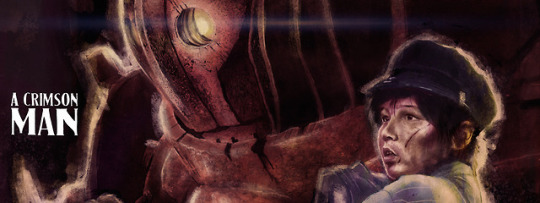

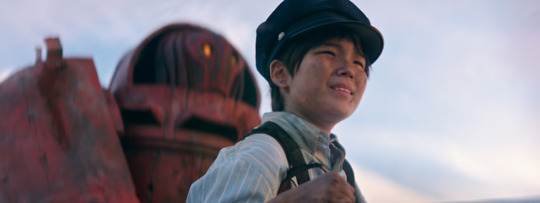
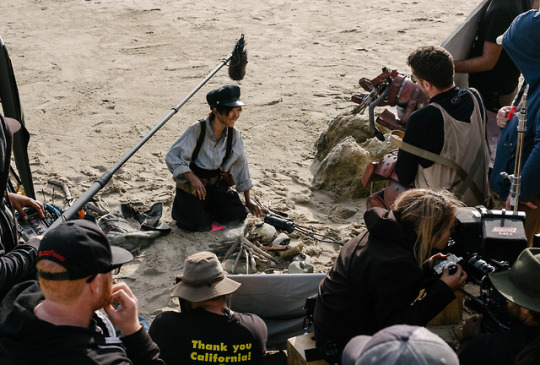
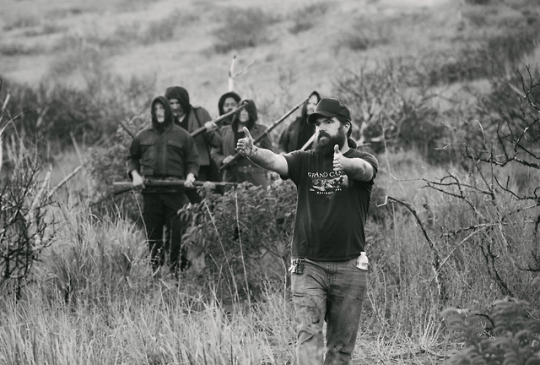
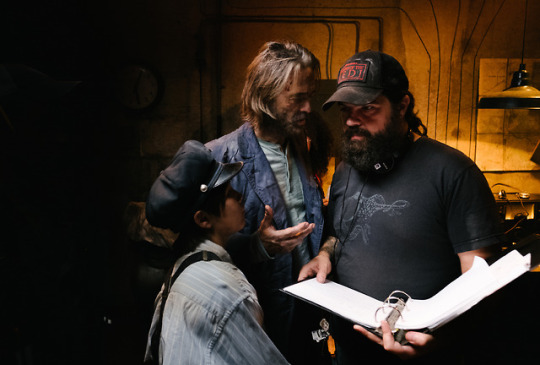
We spoke with Mike Pappa, a rising filmmaker and previous collaborator at CUTSDATFLO. Now based in LA, he crafts beautifully epic films, such as his recent sci-fi short, A Crimson Man.
Mike’s unique history in video game design, led him to working in visual effects and production design, and ultimately directing. He previously wrote and directed acclaimed short film, Frankie.
Check out our interview below, which details his love of process & storytelling throughout the making of A Crimson Man.
What’s the inspiration behind A Crimson Man?
The inspiration was the worlds from Philip K. Dick stories, PTSD accounts from veterans, and the childlike wonder and curiosity that a young protagonist brings to the sci-fi/fantasy genre. And naturally, films I had watched growing up that hold a special place in my heart: E.T., The Iron Giant, The Never Ending Story, Time Bandits, Star Wars, The Empire of the Sun and so on. I grew up as a military brat so I related to a lot to these characters' sense of awe and wonder of discovering new fantastical friends and exploring mythical and often dangerous worlds that the filmmakers had created.
In terms of writing the lead as an Asian kid, that was because of my three young nephews who are mixed-race. I wanted them to see themselves up on the big screen. That, and there's a lack of Asians leads in American sci-fi films. Regarding the character's personalities, there's always a bit of the writer in them, no?

What was the seemingly massive post-production like, and did it influence the way you shot?
The biggest influence post had on production was in scouting for exterior locations. We couldn't afford to shoot on an actual pier, a boat, or some super remote foothill. So, pulling from our bag of tricks, we chose locations that multiple scenes could be set in, would work for the planned set extensions/matte backgrounds, and we could turn the camera around to get plates of landscape and atmosphere. Basically getting the biggest bang for your buck.
When it came to VFX, the original plan was for me not to handle a majority of it. However, due to budget and schedule, I ended up taking on 75% of the 125 shots myself. And there were new challenges for me as a VFX artist; creating and compositing massive set extensions into footage shot with anamorphic lenses. These shots had to look believable. No exceptions. But, there was a point where I had to accept I'm just not skilled enough to make the shots look any more realistic. I mean, this is why you always hire people who can do the thing better than you can do the thing. So, it was definitely one of the hardest things I had ever done on a film -- but, I had wonderful guidance from VFX Consultant Nitant Karnik and help from CG Artist Jordan Sariego & Roto Artist Andy Rajput.
When it came time to do our color correction, we were lucky to do it at Company 3 and with a very talented colorist, Bryan Smaller. So, for each scene, you discuss color and mood. But, I was also breathing a sigh of relief every time a VFX shot passed "the test." Wearing VFX and Director hats became stressful. Anyone that's worked on low-budget and indie films, especially as a director, knows wearing many hats is just part of the deal. Just wasn't very fun.
Like most projects I have worked on, post influences a lot of the production. My traditional animation and production designer background shines through here. When you have a child actor, a practical robot suit, a night fight scene, and mostly exterior locations, everything must be planned to a T. I storyboarded scenes, created animatics, mocked up VFX shots, we had stunt rehearsals, and of course the expected planning of camera setups. On set, there was always storyboards displayed on foamcore so that all departments could be on the same page. The cast and crew could focus more on performances and now be a little more prepared for any unseen challenges and hiccups that always occur on the day. It was a very ambitious five-day shoot, to say the least -- but with the guidance and diligence of Producers Jordan Lietz & Tracy Wu and AD Dan Hartney, we got through it.
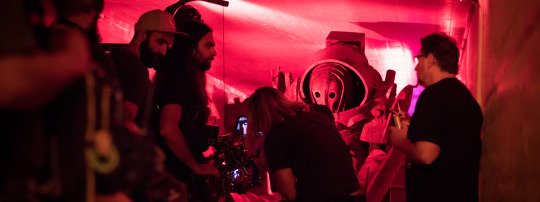
The lead was played by a child actor - did this change the logistics of the shoot?
Shooting with Maddox Henry (Wei) was a great experience. Having a practical fx robot on set was rewarding. Maddox and Dan Clarkson (Red) played off each other well. My only regret was not having more scenes with Maddox, Dan, and Craig Stark (Bunker Sentry). The three of them worked extremely well together and each brought some good ideas to the table. I've been on many sets with child actors before -- but, always as a Production Designer. A mixture of good and bad experiences. So, Crimson Man was my first time directing a kid actor. Plus, he's with a 7ft robot in every scene. I was very nervous, scared even. Thankfully, the aforementioned planning allowed me to concentrate more on the performances on set.
Logistically, the hardest challenge was the limited hours with Maddox. The whole when they're allowed to work vs. being with the teacher ordeal. The clock is always ticking! This led to having to make many compromises in the script, to the schedule, and often on the day. But again, the extensive planning, as well as me knowing what I wanted and needed to get, allowed the crew to handle these challenges and lessen the blow some.
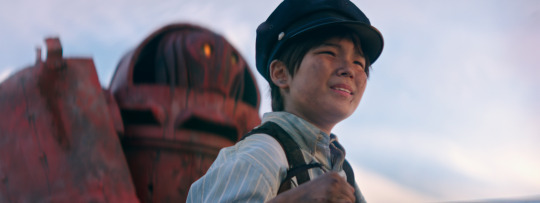
You originally come from the gaming industry. How does this influence your filmmaking?
I was an Art Director at video game company for 5 years. As mentioned above, my background is film & traditional animation. Storyboards and animatics have been forever embedded in my brain. Plan, plan, plan! I would also add that in animation you have to do your own performances, layouts & design -- these all come out when working on a film.
In terms of video games, I worked at a company in NYC where I managed two art departments in our Canadian offices as well as any outsourcing companies we hired. These experiences taught me three very important things: hire people that can do the thing better than you, learn the ins and outs of other departments, and be able to give very precise and clear notes. Maybe a film's post-production is the closest to video games. You have similar things like pipelines for creating assets, computer graphics work, etc.
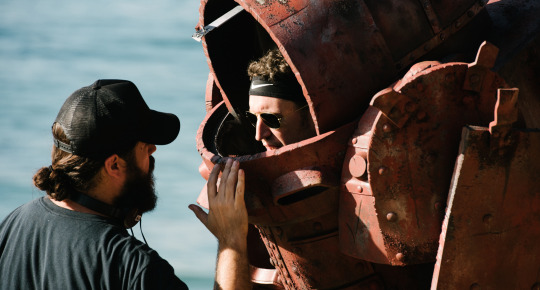
There’s an emphasis on the sweeping landscape in A Crimson Man. How important is the visual landscape ultimately when originating an idea?
Most definitely the variety and color palette of the southern California landscape has influenced me and the film's setting. However, it's also a combination of taking advantage of the landscapes' accessibility/closeness to me and to create a look & feel similar to the adventure films I grew up on. Whereas Frankie was shot where I lived at the time. Hoboken, NJ. This was my frame of mind. I think the visual landscape is paramount to a film's design. To me, it's no different than approaching it like you would design and fabricate a set. I wouldn't go as far as to say it's a character in a film, but in rare cases, it can almost feel that way due to the obstacles it may throw in front of a character.
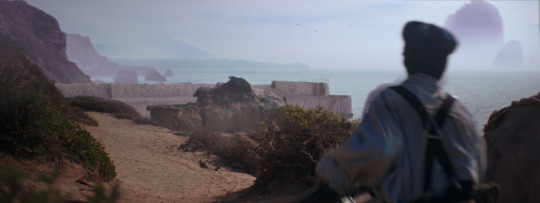
What happens now? Are you developing this project?
Find a job, ha! I'm half joking. Well, just like the millions of other filmmakers in this industry, I'm working toward developing this short into a feature. A Crimson Man was first written as a feature. Then, I took a small section of the story and created the short. After I finished the short, I begun creating more assets for a pitch package, as well as taking all the things I had learned from the short and then rewriting the feature. Now it's all about getting this package in front of the right people. I have also been writing new scripts. Always be creating!
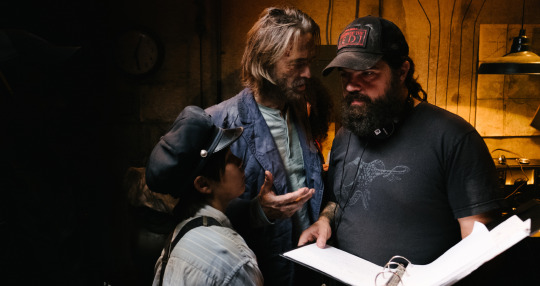
A dense, final question -- what's the point? Of filmmaking, telling stories, seeing these ideas through?
The point is a selfish one. If I don't get these stories and ideas out of my head and onto the screen, then I feel my brain will eventually explode Scanners-style. Cause otherwise, what was the point of all this madness? I love making movies. Love it. Creating art for people to watch and hopefully enjoy -- well, that's what it's all about. And without the support of family and friends -- especially from my very, very patient wife (Kate, I love you) -- I wouldn't have even got to make A Crimson Man.
However, I tend to create ambitious stories. I'm well aware it's not a wise thing to do. I'm trying to get better at this. But, it's hard for me to write the two-people-in-a-room-story. My mind starts wondering what or who else is in there. Was time-travel involved? Wouldn't it be fun if it was set in 1898? Why yes, this needs a goblin! I just can't do simple. Whether this is me wanting to increase my odds of creating something more interesting or making up for my lack of writing experience, I'm not sure. And don't get me wrong, I love watching the two-people-in-a-room movies. Some of my favorite films are like this. But then again, maybe not simple is me. My voice. A part of me always feels if I am gonna spend all of this time, money, as well as other peoples time & favors, then why not go big?
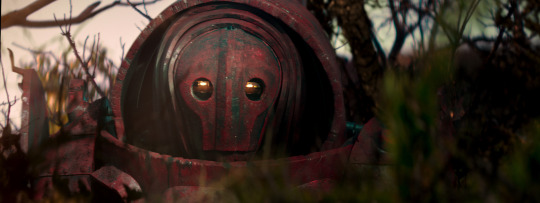
3 notes
·
View notes